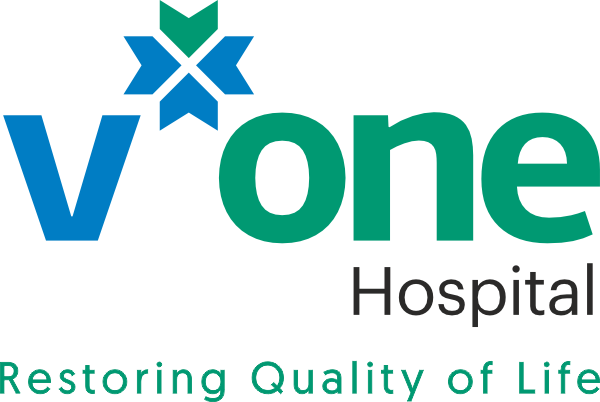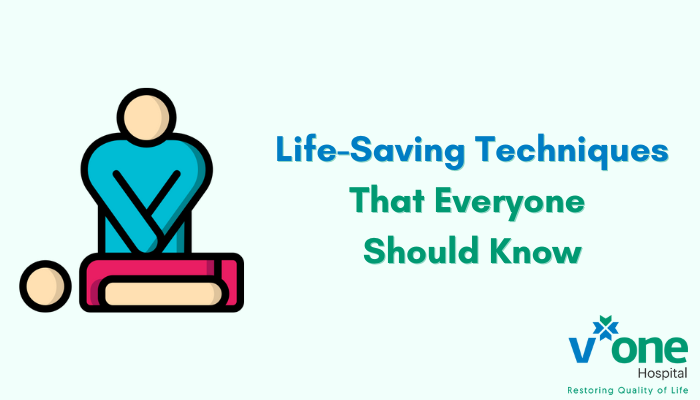Life-Saving Techniques that Everyone Should Know
Emergencies can occur at any time and in any place, making it crucial for individuals to possess life-saving techniques that can make a difference between life and death. In this blog, we will explore several essential life-saving techniques that everyone should know, with a particular focus on the Trauma Center in Indore and its Emergency Care Unit (ECU) and Trauma Care Unit (TCU). By being prepared and equipped with these techniques, individuals can play an active role in saving lives and making their communities safer.
1. Cardiopulmonary Resuscitation (CPR)
One of the most critical life-saving techniques is Cardiopulmonary Resuscitation (CPR). CPR is used to revive someone who has experienced cardiac arrest or has stopped breathing. It involves a combination of chest compressions and rescue breaths, aiming to maintain blood flow and oxygenation until professional medical help arrives.
The Trauma Center in Indore, known for its expertise in emergency care, emphasizes the importance of CPR. By promptly initiating CPR, even before the arrival of medical professionals, bystanders can significantly increase the chances of survival for the victim.
2. Basic Life Support (BLS)
Basic Life Support (BLS) encompasses a range of techniques designed to provide immediate care to individuals in life-threatening situations. BLS techniques include establishing an open airway, ensuring proper breathing, and supporting circulation through chest compressions.
In the Emergency Care Unit of the Trauma Center in Indore, medical professionals are trained to provide BLS to patients in critical condition. However, it is vital for individuals in the community to also possess a basic understanding of BLS techniques. By being trained in BLS, individuals can act swiftly during emergencies, providing immediate care until professional medical assistance arrives.
3. Control of Bleeding
Uncontrolled bleeding is a common and potentially life-threatening situation during emergencies. Knowing how to control bleeding can save lives. Direct pressure applied to the wound using a clean cloth or bandages can often stop bleeding. If bleeding persists, additional measures such as elevation of the injured limb and the use of tourniquets can be employed.
4. Choking Management
Choking can occur when the airway is partially or completely blocked, preventing the flow of air. The Heimlich maneuver, a technique involving abdominal thrusts, is an effective method to clear a blocked airway in choking victims. It is essential for individuals to be familiar with this technique, as prompt action can save lives.
5. AED (Automated External Defibrillator)
An Automated External Defibrillator (AED) is a portable device that delivers an electric shock to the heart in cases of sudden cardiac arrest. AEDs are designed to be user-friendly and can provide instructions on their use. By using an AED and delivering a shock to restore the heart’s normal rhythm, bystanders can significantly improve the chances of survival for someone experiencing cardiac arrest.
6. Recovery Position
The recovery position is a technique used to keep an unconscious person stable while waiting for medical help to arrive. It involves turning the person onto their side, supporting their head and neck, and flexing the leg at the knee to prevent them from rolling over. This position helps to maintain an open airway and prevents choking on vomit or other substances.
7. Rescue Breathing
In situations where a person is not breathing but still has a pulse, rescue breathing can help maintain oxygen flow to vital organs. It involves providing artificial breaths to the person by sealing their nose and covering their mouth with yours, then delivering slow breaths to inflate their lungs. Rescue breathing can sustain the person until medical professionals arrive to provide further assistance.
8. First Aid for Burns
Burns can occur due to various reasons, such as fire, hot liquids, or chemicals. Knowing how to provide immediate first aid for burns is crucial to minimize damage and promote healing. The initial steps include removing the person from the source of the burn, cooling the affected area with cool running water, and covering the burn with a clean, non-stick dressing. It is essential to seek medical attention for severe burns or burns affecting the face, hands, feet, or genitals.
9. Stroke Recognition
Recognizing the signs of a stroke is crucial for prompt medical intervention, as every minute counts in minimizing potential damage. Common signs of a stroke include sudden numbness or weakness in the face, arm, or leg (especially on one side of the body), confusion, difficulty speaking or understanding speech, severe headache, dizziness, and trouble with coordination or balance. If someone displays these symptoms, it is important to call for emergency medical help immediately.
10. Mental Preparedness in Emergencies
Emergencies can be stressful and overwhelming, but staying calm and collected can make a significant difference in how effectively you respond. Panic can delay action, making a bad situation worse. Developing mental preparedness involves staying informed, practicing emergency drills, and having a basic understanding of first aid principles. Knowing what to do in critical situations helps build confidence, allowing you to act swiftly and efficiently when needed.
Frequently Asked Questions (FAQ)
1. What is the first thing to do in an emergency?
The first and most important step is to stay calm and assess the situation. Ensure your safety and that of others. Call emergency services immediately. If someone is unresponsive or not breathing, begin CPR if you’re trained, or seek help from someone nearby who is. Time is critical, so act fast but thoughtfully.
2. Where can I learn first aid in Indore?
You can enroll in certified First Aid and CPR training programs offered by reputed hospitals, NGOs, or organizations like the Trauma Center in Indore. Many medical institutions in the city conduct regular workshops on Basic Life Support (BLS), CPR, and emergency response techniques for both medical and non-medical individuals.
3. How do I recognize a heart attack or stroke?
Heart Attack Signs:
-
Chest pain or tightness
-
Pain in arms, neck, jaw, or back
-
Shortness of breath
-
Cold sweat, nausea, or lightheadedness
Stroke Signs (Use FAST):
-
Face drooping on one side
-
Arm weakness or numbness
-
Speech difficulty
-
Time to call emergency services immediately
If you notice any of these symptoms, seek emergency medical help without delay—every minute counts!
Conclusion
In emergency situations, knowing life-saving techniques can make a significant difference in the outcome for individuals in need. The Trauma Center in Indore emphasizes the importance of CPR, BLS, control of bleeding, choking management, AED use, the recovery position, rescue breathing, first aid for burns, and stroke recognition. By acquiring knowledge and training in these techniques, individuals can be prepared to respond effectively during emergencies, potentially saving lives and creating safer communities. Remember, timely action and access to professional medical help are vital components of the emergency response process.

